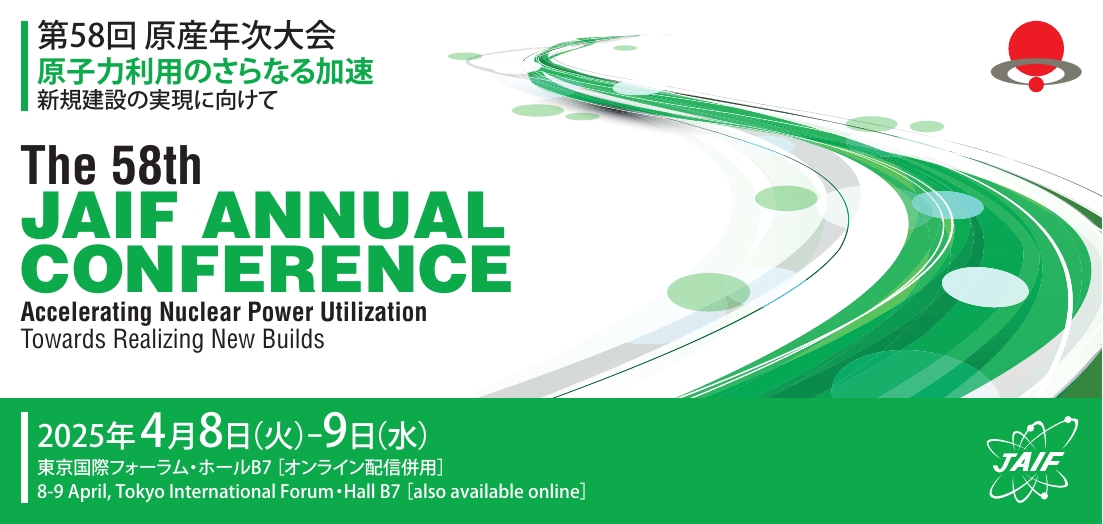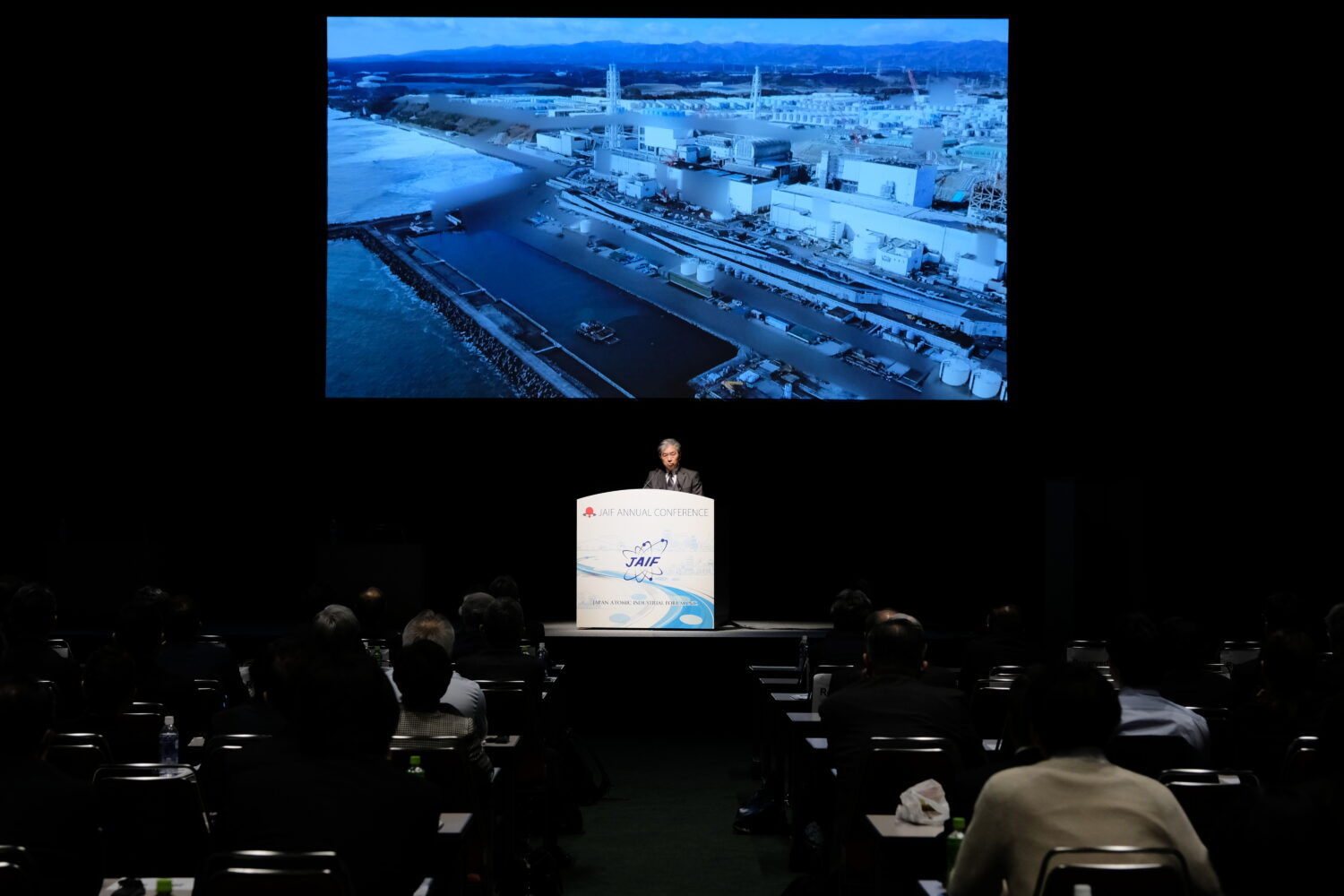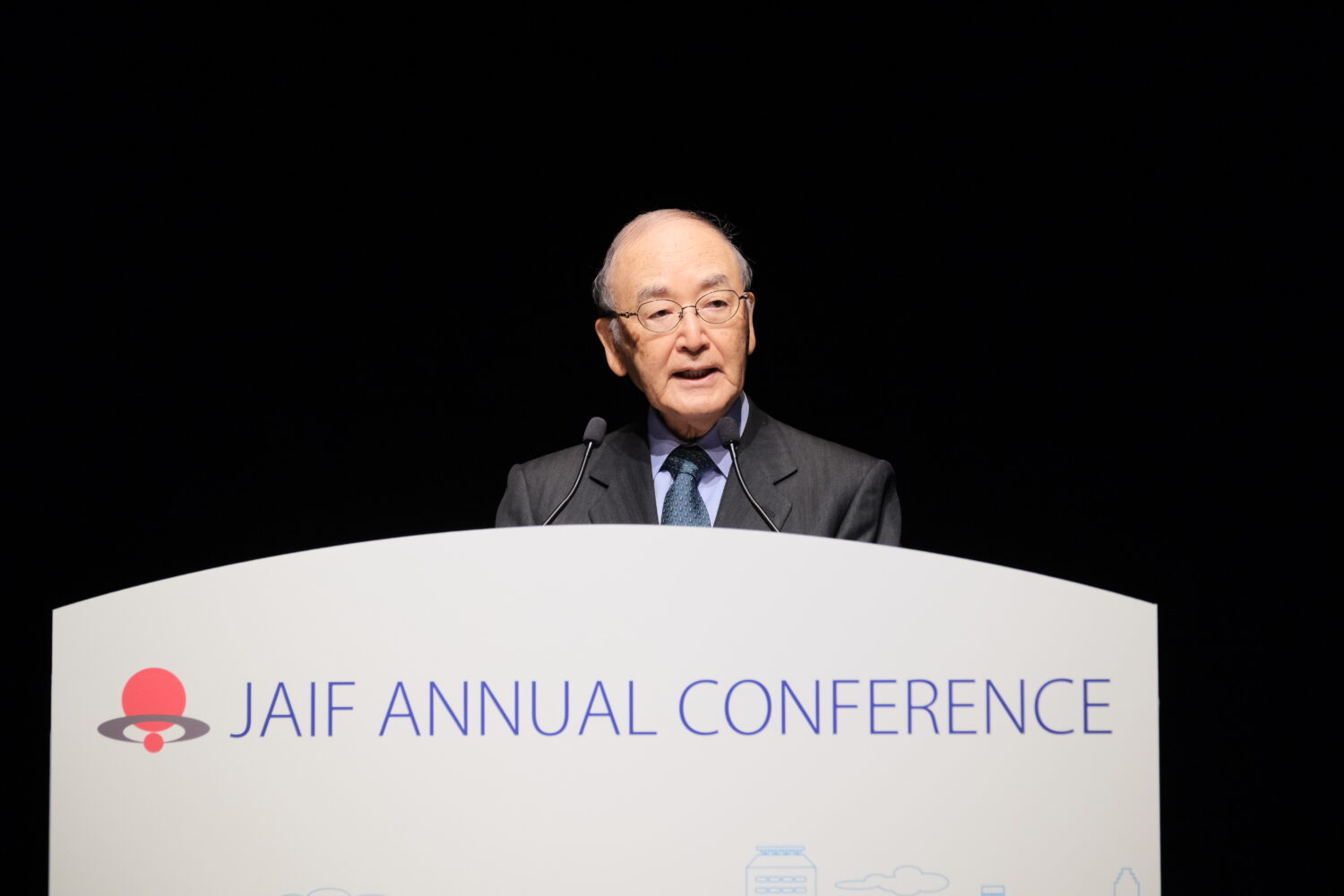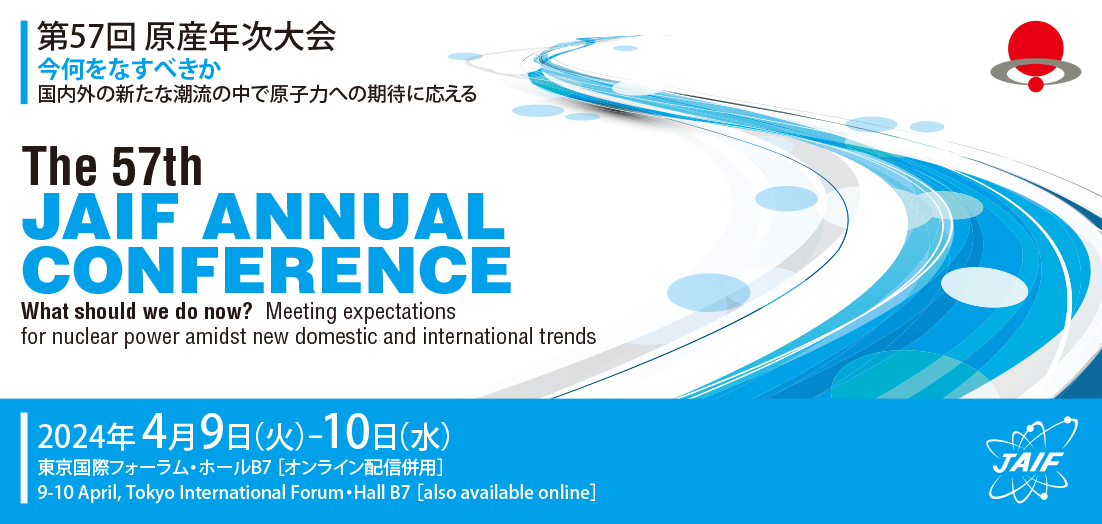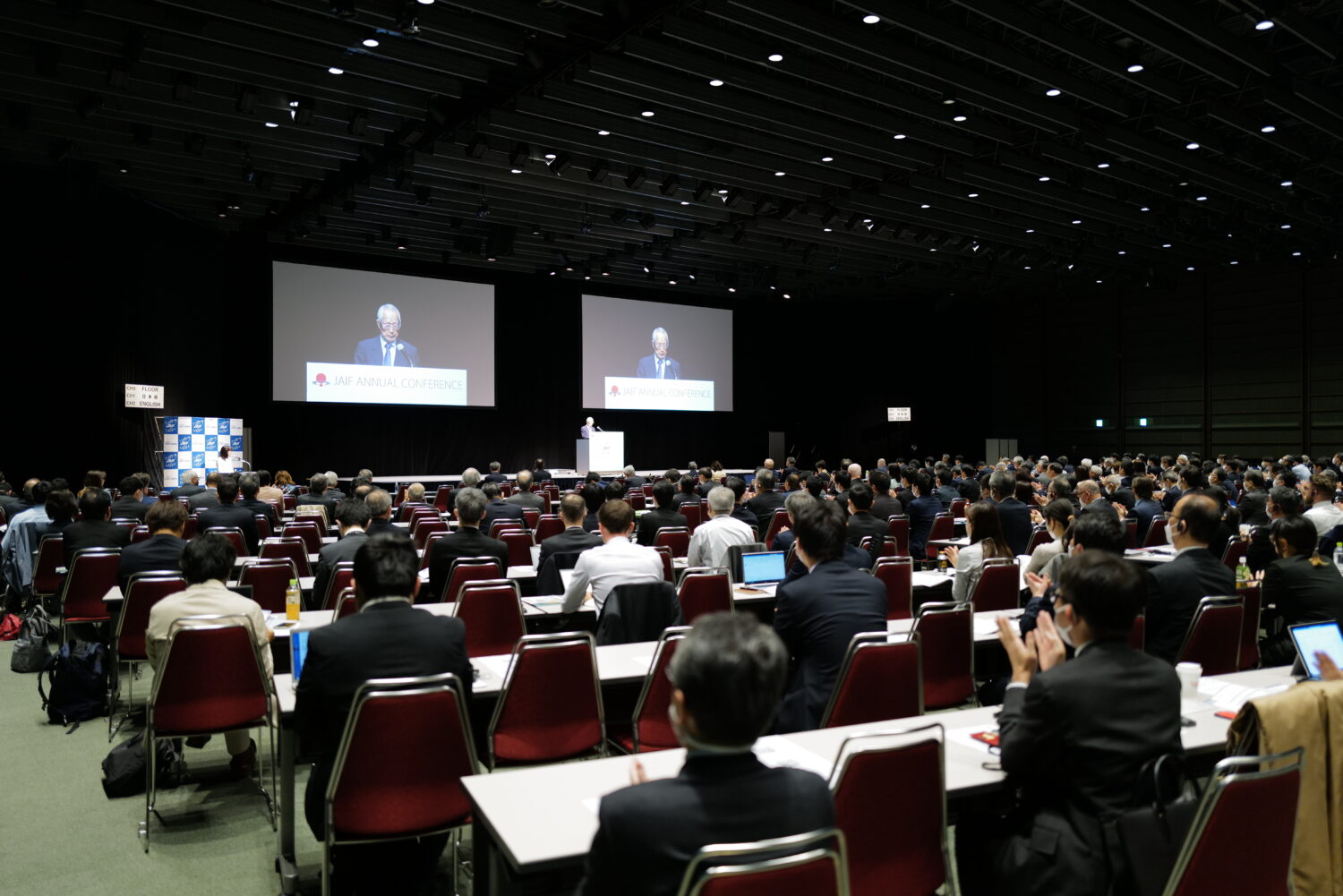The five panelists for Session 4 were:
- KANZAKI Yurugi, director of the Nuclear Systems Engineering Department, Nuclear Energy Systems, Mitsubishi Heavy Industries, Ltd. (MHI)
- ANEGAWA Takafumi, fellow at Tokyo Electric Power Co. (TEPCO)
- OHSHIMA Hiroyuki, executive director of the Japan Atomic Energy Agency (JAEA)
- Mikal BØE, founder, chairman and CEO, Core Power (UK) Ltd.
- SONE Yoshitsugu, associate professor at the Institute of Space and Astronautical Science in the Japan Aerospace Exploration Agency (JAXA)
Moderator Kurosaki began the session by saying, “Nuclear is more than just a technology for power generation: it is important across a range of societal and economic activities, and is a major contributor in the effort to decarbonize. Here today, looking into the future, at the picture for 2050—focusing on its potential and diverse applications—we hope to obtain suggestions for broadening the range of nuclear use.”
Kurosaki, who chairs the working group on advanced reactors under the government’s Advisory Committee for Natural Resources and Energy, said that he expected the development of advanced reactors to trigger nuclear innovation. He then kicked off the remainder of session with a series of key phrases: “creating new value for nuclear power,” “fusing advanced and differing fields,” and “making nuclear power attractive to people in general and to young people in particular.”
Next, MHI’s Kanzaki talked about activities to develop advanced reactors in Japan, focusing primarily on the concept of the advanced light water reactor (LWR) SRZ-1200 (1,200-MW electric output) from his company, which is slated to be commercialized in the mid-2030s. He also introduced MHI’s lineup of advanced reactors, which are small LWRs (electric output of 300MW), high-temperature gas-cooled reactors (HTGRs), fast reactors, and micro reactors (portable reactors available as power sources on remote islands, in other remote areas, and in disaster-affected areas). He then addressed the students on the floor, telling them that the myriad of technologies offered them many opportunities, and urged them to accept the challenge and contribute to society.
After that, JAEA’s Ohshima turned to the topic of research and development, presenting the requirements for next-generation advanced reactors and their successful societal implementation, which he said were premised on “Further safety improvement,” as follows:
- Stable supply
- Large-scale, stable power sources emitting no carbon
- Innovative safety improvements
- Strengthened and maintained supply chains
- Technology self-sufficiency
- Resource cycles
- Resolution of nuclear waste issues
- Effective use of resources
- Flexibility
- Output variability to complement renewable energies
- Use of hydrogen and heat
- Flexibility in location
- Production of medical radioisotopes
He then introduced JAEA’s development of technology for HTGRs and fast reactors. Fast reactors, he said, along with reducing the volumes and toxicity of nuclear waste, have immense potential as new energy supply systems used in conjunction with renewable energies and waste heat from other industries. Saying that “there are so many interesting challenges,” he expressed his hope that the students would be motivated to work on them.
Following that, Anegawa, Bøe, and Sone each gave separate presentations on possibilities for nuclear development and utilization in cooperation with other fields.
First, TEPCO’s Anegawa talked about the concept of floating nuclear power plants (NPPs) under consideration at the Council on Competitiveness-Nippon (COCN), with input from the shipbuilding industry. Technology for floating plants on the sea—as is now done with oil drilling rigs in other countries—is promising. Anchored offshore, such facilities would avoid damage by tsunami, could be cooled using seawater, and would obviate the need to evacuate area residents in emergencies. Citing the possibility of deploying them in the future in Southeast Asian countries that have a relatively high probability of earthquakes, Anegawa suggested joint work between the students and retired engineers with experience building NPPs, partly for the sake of continuing the technology.
Meanwhile, Core Power CEO Bøe, who is leading his company’s development of innovative technology to increase productivity in marine transportation, said that at present, about 7,300 large vessels out of the approximately 100,000 vessels in the world consume over 50% of all marine fuel, emitting CO2 and air pollutants. He emphasized the significance of introducing floating NPPs with the potential to provide clean fuel as the power source for those vessels, estimating the market to be about USD6 trillion.
In terms of technological feasibility—considering that it would be unnecessary for them to change fuel for up to 30 years, plus the ability to manufacture them using assembly line techniques, and more—Bøe said that a demonstration of molten chloride fast reactors (MCFRs), selected as the most appropriate reactor type, was being planned at the Idaho National Laboratory in the United States in 2026 or so.
Meanwhile, JAXA’s Sone, who has been engaged in the R&D of storage batteries for space, first talked about his experience in the recovery of the capsule from the Hayabusa Asteroid Probe. “The technology for an interplanetary round trip has become possible in Japan,” he said. He pointed to the limited availability of sunlight as a challenge for the Deep Space Fleet Vision, which aims to reach beyond Jupiter. He identified decay heat and nuclear fission chain reactions as nuclear power sources in space, adding that they would be applicable to space probes and at permanent bases. Sone also said that he thought that the use of radioisotopes could revolutionize the designs of low-power probes. He asked the nuclear industry for its understanding and cooperation. Still positive about the Deep Space Fleet, Sone, who called himself “a space battery maker,” is developing a so-called solar-powered sail probe system utilizing a thin-film solar battery installed on the surface of sail film.
Looking back on his own experiences—remembering that his desire to study batteries was once opposed by the people around him—he told the students, “If you are trying to get somewhere and a headwind is holding you back, consider it an opportunity.”




